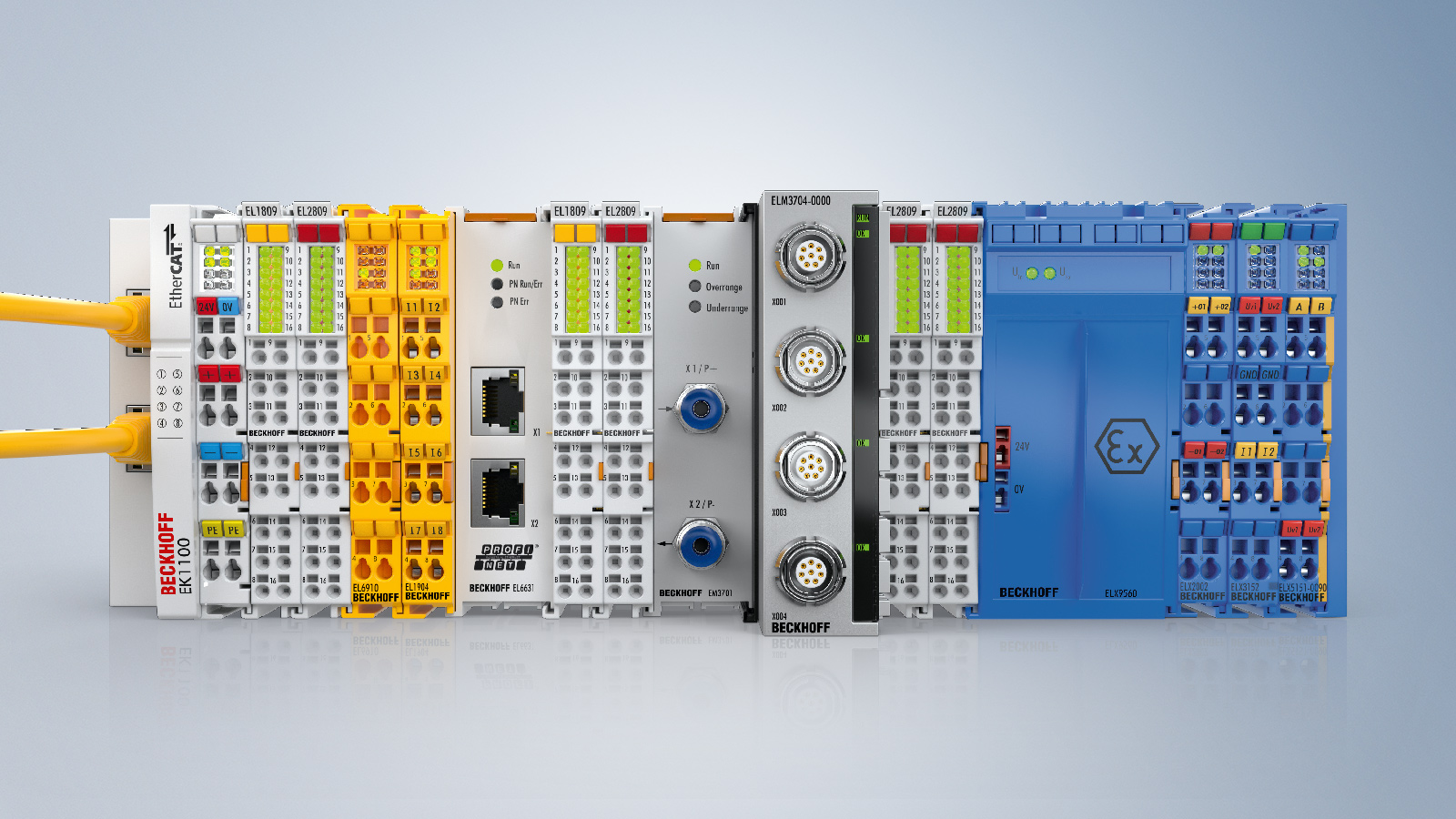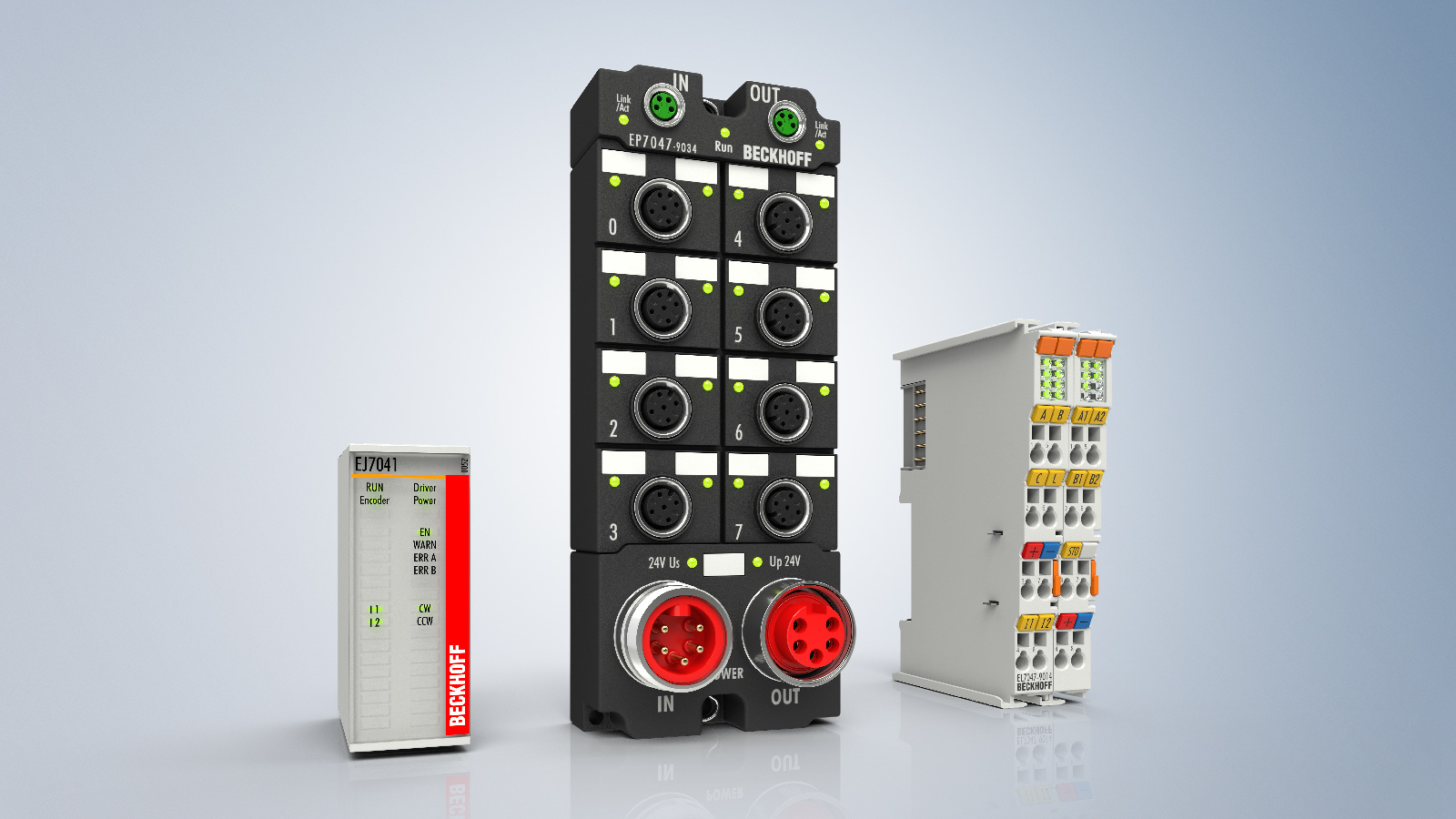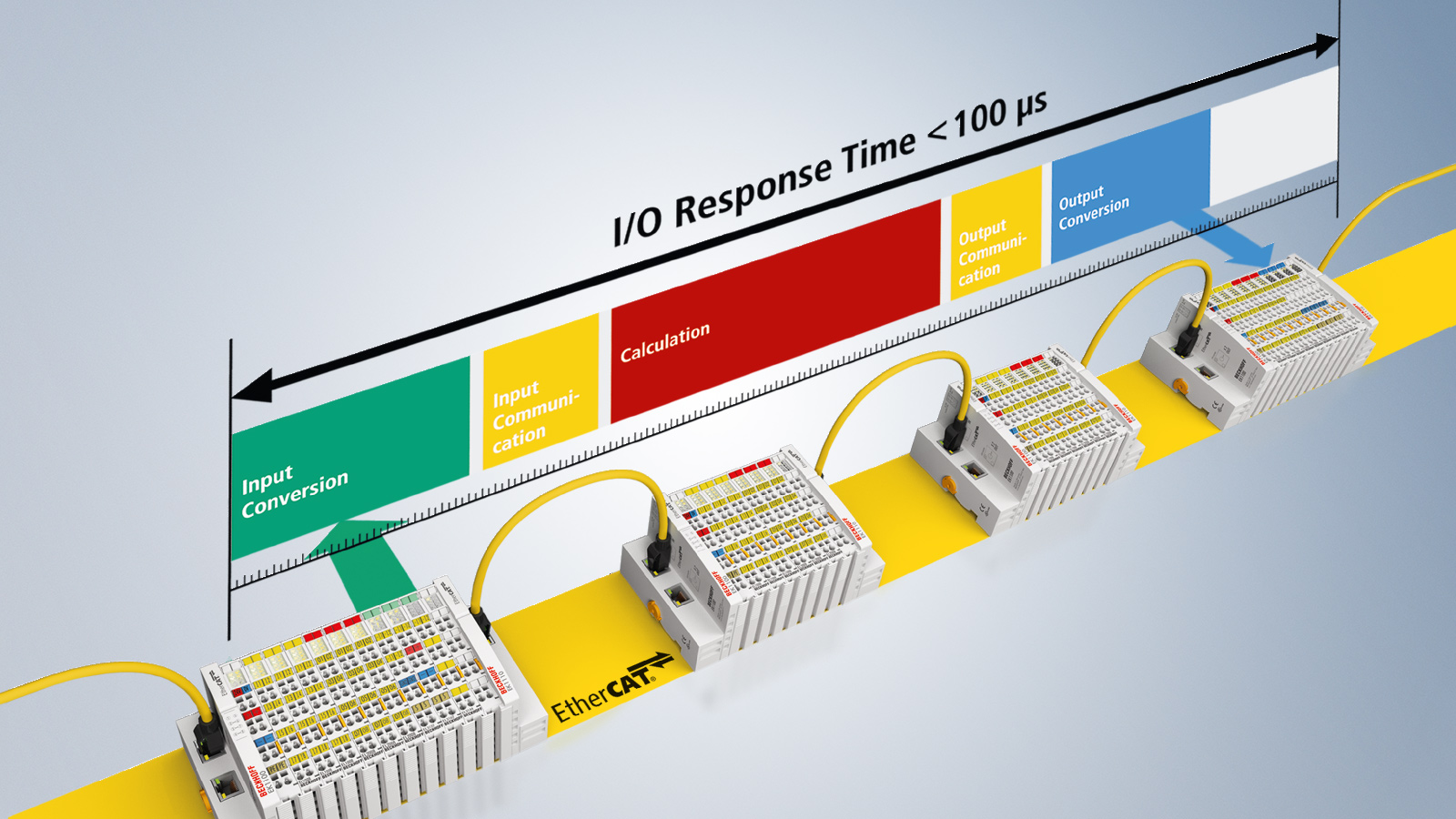

Interview with Michael Jost on 20 years of EtherCAT and EtherCAT I/Os
EtherCAT and the EtherCAT I/O range from Beckhoff are both celebrating their 20th anniversary. In this interview, Michael Jost (Senior Product Manager I/O Systems and EtherCAT) describes the technological advantages of combining the ultra-fast communication system with the diverse I/O spectrum and how quickly the application possibilities have expanded over the past two decades.

EtherCAT is celebrating its 20th anniversary alongside the EtherCAT Terminals from Beckhoff. What was the motivation behind these two developments from an I/O point of view?
Michael Jost: EtherCAT as a technology is the logical continuation of the PC-based control philosophy represented by Beckhoff. To fully leverage the performance capabilities of modern CPUs for PLC, motion, and other applications, the communication interface of the IPC also has to keep pace with the automation technology world in terms of speed and synchronization. The decisive factor here is that EtherCAT has been not only implemented as far as the bus coupler, but also continued into each terminal. This ensures that all EtherCAT features are also available in the I/O system. As a result, we have (almost) no limitations regarding the achievable EtherCAT Terminals in terms of communication performance.
What special advantages does EtherCAT offer as a system bus in the I/O area, from both a purely technical point of view and functionally – for example, with distributed clocks, eXtreme Fast Control (XFC) technology, and Safety over EtherCAT?
Michael Jost: The main advantage is that nobody has to worry about the speed of data transmission – neither us during development, nor our customers in their applications. Quite simply, it is sufficiently high for >99% of products and applications. The EtherCAT bandwidth is also highly advantageous for safety I/Os, since all safety protocols are quite long due to the additional safety mechanisms and the bandwidth of slower systems is quickly exhausted or, in other words, cycle times are slowed down. With regard to safety applications, this can be a disadvantage, for example, because greater distances are required between protective devices and the hazardous area. Distributed clocks as an EtherCAT synchronization mechanism form the basic technology for synchronously operating output modules – from glue nozzle control in syncronization with motion sequences through to servo terminals with interpolated motion sequences. On the input side, this function is essential for synchronous position or measurement data acquisition. Optimized timing of machine sequences through XFC (eXtreme Fast Control) technology also makes it possible to increase the efficiency of a machine – without any mechanical changes.
The original bus terminal portfolio has been expanded enormously with the EtherCAT Terminals. How has the range of IP20 EtherCAT I/Os developed since then and what were the most important development steps?
Michael Jost: We always develop platform-based solutions, which usually lead to a whole new group of products. Notable examples include:
- XFC technologies for time stamping, oversampling and microincrements
- cost-effective solutions through multi-channel terminals
- comprehensive solutions in the field of I/O system-integrated compact drive technology for servo, stepper, DC, and BLDC motors
- high-end measurement technology in the ELM series

In which application areas did the new EtherCAT Terminals break through most quickly and how has this developed over time?
Michael Jost: We decided from the beginning not to market the EtherCAT Terminals as a high-speed/high-price system, as the prices were actually slightly lower than those of our existing systems, so they were used in all areas right from the start. Of course, they have been especially popular in applications where the faster update times offer significant advantages. One of the first machines to be equipped with these terminals was a hydraulic press, where EtherCAT enabled the rapid detection of position (SSI terminal) and pressure (analog input terminal), as well as the rapid control of the hydraulic proportional valves (analog output terminal) and complete control in TwinCAT. As a result, the machine builder was able to improve plant performance and product quality independently without depending on a purchased control assembly.
How many EtherCAT Terminal variants are currently available and what signal spectrum do they cover?
Michael Jost: There are currently around 700 different EtherCAT Terminals that cover almost all signals relevant to the market.
Several design variants have also been added over the past two decades, including the EtherCAT Box modules in the EP series with an IP67 protection rating. What was the reason for this development and how quickly did this design establish itself on the market?
Michael Jost: We like to offer the optimal I/O solution for the respective application, whether that’s an IP20 terminal for the control cabinet, or entirely control cabinet-free in IP67. Developments like these are prompted by customer needs, which also show increased demand for IP67-protected products. The circuitry and firmware are usually based on a uniform basic design, which means we can vary the design of proven solutions without having to develop completely new ones.
And how did the HD terminals and the EtherCAT plug-in modules in the EJ series come about as further variants?
Michael Jost: The development of the HD terminals allowed us to set a new market standard for packing density in modular I/O systems. Incidentally, we were also able to reduce the prices per channel for many signals, which means customers can save on costs in addition to space in their control cabinet. It’s clear to see why it didn’t take long for us to achieve market success with these benefits. The EJ variant as a ‘bus terminal’ designed for the printed circuit board optimized control cabinet design, especially in high-volume machine building, by replacing labor-intensive point-to-point wiring with industrially manufactured circuit boards featuring application-specific connection technology. This results in significantly shorter wiring times and a reduced risk of errors. Generally speaking, the machine can be wired up as efficiently as a car, complete with electronics and pre-assembled harnesses, without compromising on the flexibility and ease of maintenance of a fine-modular I/O system.
Does the same apply to the ELM terminals in the metal housing?
Michael Jost: With the ELM housing, we have laid the foundations to innovate and introduce new product categories within the I/O system. The prime example here is our high-precision measurement technology, in which optimum shielding and signal-optimized connectors represent two key features. Together with the appropriate circuit design and the sophisticated calibration process, these ensure a level of accuracy that is often 30 times higher than the industry standard. Furthermore, the metal housing can dissipate higher power losses, which enables completely new performance classes and multi-axis solutions in the field of compact drive technology.

The topic of connectivity is of particular importance in the field of I/O. What sets the corresponding developments such as EtherCAT P and the Beckhoff hybrid connectors apart?
Michael Jost: Time-to-market is not only crucial for machine builders, but also for many innovative end customers. This is where One Cable Automation (OCA) from Beckhoff creates the optimum conditions. Our scalable hybrid connectors enable combined communication and power transmission for almost all application requirements. They offer the additional advantage of a high degree of modularity, which allows a wide range of variants for a host of different applications, while also providing mechanical coding and connection security. They also feature a uniform data core in all four connector sizes – B12, B17, B23, and B40. This is all fundamental to these connectors becoming successfully established as the ideal solution for decentralized automation – i.e., OCA. Another key selling point is that our hybrid connectors are among the first products to comply with the future IEC 61076-2-118 standard.
The 20th anniversary of the EtherCAT Terminals is not the only milestone we are celebrating, as this occasion also marks the tenth anniversary of the compact drive technology. How did this new development come about in 2013?
Michael Jost: With some products, the simple answer is that, “It was possible.” The increasingly efficient power semiconductors meant we were able to integrate the power output stage into a single terminal. After all, making advances in semiconductor technology that can be used in automation technology is all part of our mission, you could say. Of course, part of the success was also our correct market assessment that users would feel strongly inclined to use a solution that is already optimally system-integrated instead of having to use external power output stages with analog setpoint control or pulse train input.
What are the development highlights here in terms of application areas and portfolio expansions – for example with the ELM servomotor terminals with increased power output?
Michael Jost: The compact drive technology now follows on almost seamlessly from the performance of the large drive technology (AX8000/AX5000 Servo Drives). With regard to the integration of the brake chopper function and safe motion, the feature set is now very consistent. This makes it easy for users because they can make their choice based entirely on power requirements while the achievable properties will be almost identical – regardless of whether the supply voltage is 48 V DC or 400 V AC. It therefore goes without saying that compact drive technology now plays a key role in our motion portfolio.
Are you able to hint at any future developments in the field of EtherCAT I/Os, both in terms of new terminal products and with regard to EtherCAT as a system bus?
Michael Jost: Our claim is to support all market-relevant signals, to be competitive in all individual areas, and – true to our slogan of ‘New Automation Technology’ – to continuously increase the performance of PC- and EtherCAT-based control technology. In the analog segment, for example, we are working on a number of products with enhanced features and optimized prices. We will also continue to implement the proven EtherCAT Terminals in other designs to provide optimum wiring options for every machine. Further details on this will be revealed at upcoming exhibitions.


